Niro requires no fiddling to electrify driving
Filed under: Weekly test drives, Autos
By John Gilbert
If you have an odd sense of humor, you can use it to fool and confuse your friends when you’re driving a Kia Niro EV. Park it in a parking lot and ask if anyone can help locate the gas filler. They can walk around the car, several times, but they won’t find one. There isn’t one.
Then ask if any of them hear anything unusual as you drive away. Hit the gas pedal and Zap! You have accelerated away. When you come back, they will tell you they didn’t hear anything odd, because they didn’t hear anything at all. There is no sound, because there is no gasoline engine. The Niro EV is pure-electric, going beyond the hybrid Niro and plug-in hybrid Niro.
The Niro is Kia’s newly introduced compact SUV, sort of. It looks like a crossover SUV, it has the room of a compact crossover SUV, which it resembles far more than any rank-and-file car. The major hint is the terminology “EV.” That stands for Electric Vehicle. So there is no place for a gas filler, because there is no gasoline engine under the hood.
It’s not a Tesla, or any of those exotic, $100,000-plus luxury vehicles. It is an under-$50,000 wagon that looks like a compact SUV, which aims to show us where our cars of the future are heading. It’s “fuel economy” figure on the sticker shows 123 miles per gallon city, 102 highway, or 112 MPGe combined. The lower-case “e” after MPG stands for “electric.” It is a symbol of a changing world, which is fast approaching.
The Niro is silent-running, and when you switch it on, don’t wait for an engine sound, just look for the little sign on the instrument panel that says “ready to drive.” Switch the rotary knob on the console to “D” and you’re off. There is also an “R” indicator to the right, and an “N” for neutral, and the little round circle with a “P” on it in the middle of the shift knob is for park. When you stop, or park, make sure you hit the P, and you might want to make sure it is shown on the instrument panel, or the silent-running Niro might go home without you!
The Niro is very comfortable for four or five, and it is both quick and good-handling both in city driving or cruising on a freeway, where you are amazed at how quick it is, and pleasantly surprised at how easy it is to hear conversations, or the fine audio system, because there is no engine noise.
The Niro seems to be facing its own identity crisis, possibly trying to decide if it is a luxury car, a sporty car, or an SUV. Think I’m exaggerating? Motor Trend runs an annual issue with capsules showing all the new cars, and a different issue showing all the new SUVs. I checked it out for the Niro among the small SUVs, but it wasn’t there. Then I pulled out the car issue, and, sure enough, Motor Trend showed the Niro among the cars. There are other compact crossovers without all-wheel-drive that don’t get insulted by being placed with cars, but the Niro seems OK with it.
My appreciation of hybrid vehicles has been increasing at about the same rate that coordinated gas-electric hybrids have been moving into increasingly prominent roles in the auto industry. Knowing that the gas engine will recharge the electric motor is comforting, but I have had trouble getting my hands on anything from one elusive segment, up on the great North Shore of Lake Superior, and that is an EV — a pure electric vehicle.
Brief drives in vehicles such as the Nissan Leaf, left a strong impression, although its earliest models had a modest range of 20-something miles. There were others, too, but the manufacturers who build pure electric vehicles, with real-world driving range capabilities, pretty much ignore what we endearingly call “flyover land.” The reason is obvious on a couple of counts.
One, the expense of installing rapid charging stations naturally placed them in high-population areas like Los Angeles, or San Francisco, or the New York-Boston area of the East Coast. Maybe Florida. Second, it gets cold in the Great White North, really cold, and that can knock the starch out of the driving range of battery packs.
But EV-makers shouldn’t overlook the Upper Midwest. I keep writing that we’re all headed toward a world of electric-powered cars, and we’ve done well with hybrids and plug-in hybrids. Not only that, but we have a few EV charging stations in Minnesota — mostly in the Twin Cities of Minneapolis-St. Paul, but a few in Duluth, right up here on the often-freezing tip of Lake Superior.
When I was notified that a vehicle would be delivered from a press fleet operation in Chicago, and it would be the Kia Niro EV, they informed me that it would be delivered to my house up the hill from the North Shore in rural Duluth, in an enclosed trailer.
Sure enough, the vehicle was a 2019 Kia Niro EV, in EX Premium trim. That’s a lot of suffixes, but the EX and Premium tags just denote various creature comfort packages on the particular vehicle coming my way. The car is Kia’s version of a similar drivetrain in the Hyundai Ionic, and more recently the Hyundai Kona compact SUV.
The Niro resembles a compact SUV, but it really is an example of how the South Korean partners are now differentiating their models. The Ionic is a slick compact sedan with large-car interior space, while the Kia designers took the same platform and built it up into an SUV-style vehicle using the same powertrain.
That powertrain is a 64 kilowatt-hour Lithium-Ion Polymer battery pack, built low and streamlined by LG Chem, a South Korean electronics innovator, and it produces 150 kilowatt-hours — or 201 horsepower — through an AC synchronous motor. It also has a 7.2 kilowatt on-board charger, and a DC fast-charge port for 480 volts in the front grille. It is concealed behind a small horizontal trap door on the end of what looks like a trim bar. Pop it open, pull the charge cable out from its receptacle under the hatch, and you can plug it into a normal household outlet, or a high-voltage outlet, or a special quick-charge outlet if you can locate one.
Range Rover Sport offers 575-HP kick
Filed under: Weekly test drives, Autos
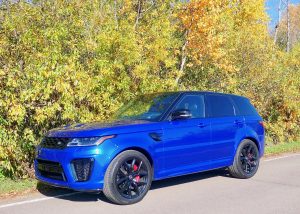
Range Rover Sport in Estoril Blue stood out against the autumn leaves, before the gales of October blew the colorful foliage away.
By John Gilbert
Dating back to when Land Rover’s Range Rover was a British brand of over-built SUVs from back before “SUV” became a working name, back when it was powered by a fun but less durable ‘Buick V6, it was hard to test-drive any Range Rover without being thoroughly impressed. The company’s staff of off-road adventurers could set up challenging off-road courses ir send you around Iceland or up to the Rocky Mountain continental divides to impress you with the vehicles’ prowess.
Over the last 20 years or so, I’ve been favorably impressed with all of them. Some more than others, of course. But now I’ve got a favorite — the Range Rover Sport SVR.
The Land Rover Discovery Sport, Land Rover Discovery, Land Rover Range Rover, Land Rover Range Rover Evoque, Land Rover Range Rover Velar, and the Land Rover Range Rover Sport all work together to make up the current exceptional stable of road-worthy — and off-road-worthy — SUVs. Different engines, different capabilities and different price ranges separate them from each other. The range goes from $39,000 for the compact Discovery Sport to a whopping $209,000 for the Land Rover Range Rover — which deserves both names, and then some.
The Range Rover Sport, however, stands tallest among the breed for those who love more sportiness than luxury while charging off the road to make their tracks where neighbors and others can be impressed but may not be able to keep up with your adventurousness. For those onlookiers, the Range Rover Sport stands out in plain sight, on the road.
You can buy a Range Rover Sport for $67,000 if you select the 2.0-liter turbo four with its hybrid boost, or a bit more for the 3.0-liter turbo-diesel. or you could step up to either of a pair of 3.0-liter supercharged V6es. But the pick of the litter is one of the two 5.0-liter V8 engines, with your choice of power. The first is a 518 horsepower, 461 foot-pound engine, which would be more than satisfying, if only the monster version didn’t exist.
That’s the one that came in my stunning Estoril Blue Range Rover Sport — the 5.0 supercharged V8 SVR, tuned by the corporate Special Vehicle Ops to 575 horses and 516 foot-pounds of torque. That, plus the load of unique equipment, take the $114,500 base price for the Range Rover Sport, and lift it to $131,520.
That’s a lot, but don’t dismiss it until you evaluate what you’re getting. Special Vehicle Ops is a performance oriented group that performs customizing on all things Jaguar or Range Rover. The two are jointly owned by Tata Motors in India, which admires the two British companies and has managed to extract the best from both. After sputtering, so to speak, on their own after being cut adrift by Ford Motor Company, the two were purchased by Tata, which gave Jaguar exactly what it needed — an enormous outlay of engineering money so they could build engines up to the standards promised by their beautiful sports cars and sedans. It only made sense to allow Range Rover to use the precious engines, instead of buying something from BMW, or Ford, or anyone else.
Safety focus required for drivers and vehicles
Filed under: Weekly test drives, Autos
By John Gilbert
Driving in the rain, and the snow, and in other dangerous conditions, are topics worth frequent discussion, and so is the ability to focus on driving, even when conditions are perfect. Safety technology in modern vehicles is truly remarkable, and the technical capabilities built into new vehicles can be a tremendous ally to any driver. But those features cannot insulate us from the potential of tragedies that always lurk out there.
During our last visit, we discussed the numerous vehicles available for the Midwest Auto Media Association (MAMA) members to drive at the annual Fall Rally at Autobahn Country Club in Joliet, Ill., and the ensuing voting procedures for Family Car of the Year. Two things led me to follow up this week. One was the explanation I noted about driving home from Chicago to Duluth, in extraordinary circumstances. The other was a personal family tragedy we were stricken with on a Minnesota highway.
Driving home from Chicago, we had the opportunity to drive a new 2020 Hyundai Palisade, that South Korean company’s first venture in building a large, roomy, 3-row SUV, and Hyundai’s partner, Kia, offers a sister ship with the Kia Telluride. Hyundai has been making a series of fantastic vehicles accompanying a decade of remarkable technical breakthroughs, since about 2010, shortly after taking over the struggling Kia brand. Kia was able to adapt to Hyundai’s technical mastery and the two now operate separate but equal vehicles at all levels, leaving the styling to differentiate your choice.
When it comes to the new Palisade — and Telluride — I must say it is challenging, if not impossible, to pick one over the other.
I had driven the Palisade at its introduction, in Coeur d’Alene, Idaho and the surrounding mountains, and on a very interesting journey across the state of Washington, after that introduction. I also recently had a week to live with a Telluride, home on Lake Superior’s North Shore, just outside Duluth, Minnesota. So this would be my chance to drive the Palisade home for a week’s use, and potential comparison. Getting there was more than half the fun, and education, of the Palisade’s assets.
The Telluride had all of those same assets — a fantastic new platform, longer than the outgoing Sante Fe, with Hyundai’s engine magic applied to its 3.8-liter V6, with direct injection, an 8-speed house-built automatic transmission that is up there with the top transmissions in the industry, a secure safety structure making generous use of high-grade steel from Hyundai’s own steel manufacturing plant, and a firm but supple suspension system to accommodate the active, on-demand all-wheel-drive system.
Track driving can’t beat night freeway downpour test
Filed under: Equinox, Weekly test drives, Autos
By John Gilbert
Joliet, Ill.—We poured out of the meeting room after breakfast to look over the rows of new cars we were about to test drive on the private road-racing course at the Autobahn Country Club. That’s when I first spotted the pair of compact SUVs, parked only a few feet apart, and clearly unrelated.
As it turned out, they were two of the most impressive vehicles, in my opinion, of the annual MAMA Fall Rally, held on October 2, 2019. The first one was a low and sleek vehicle, parked next to a flashy Ford Explorer, which itself has been redesigned as a 2020 SUV. But the low, sleek little black one was the new Escape — looking nothing like any Escape we’ve seen in the two decades of its life.
For further evidence, we drove the Escape and found it quick, agile and a treat to drive, around the side-roads surrounding the Autobahn Country Club. I drove it back in, and parked it in exactly the same spot it was, and when I climbed out, I spotted a gleaming white compact SUV — the new BMW X2, which, as a fool could guess, is smaller than an X7, X5, X4, and X3, and larger than the X1. This X2 also was an M35, meaning BMW’s high-performance treatment had imbued it with more power, special suspension, special interior, and everything you might want, if you can afford it, to update it from 2019 to 2020.
Driving the X2 was also a treat, and it would have been our No. 1 pick, except that the Escape was a much more user-friendly price, and you could undoubtedly buy two of them for the price of the X2. So in our ranking, the star of the show was the Escape, and the BMW X2 second. We vote on a “family vehicle of the year” through MAMA, which seeks real-world family virtues in a vehicle, which must also be a 4-door, to preclude racey coupes.
The Midwest Auto Media Association (MAMA) puts on two fantastic shows for its members every year, a Spring Rally at Elkhart Lake, Wis., on the Road America road course, and a Fall Rally at the Autobahn Country Club. That facility, with two complete road courses, is laid out with high-tech maintenance garages adjacent, and it’s just like a golf country club, only instead of playing golf, you come out, work on your favorite car, and go out and drive in on the track. Within reason, of course. The only downside was that the Chicago region was hit by pretty steady rain all day, so we either drove on the nearby roadways, or took it very easy on the race track.
Reporting about cars — and sports, too, for that matter — is a family affair in the Gilbert Household, and Jack, our older son, always accompanies me to the rallies, and was my co-driver down and back from Duluth to Chicago. He also takes photos and gives us two rear ends in the drivers seats and four eyes instead of two to scrutinize the new stuff. He agreed with me that the Escape and X2 were the two show-stoppers, although he would put the BMW first.
The field of vehicles was somewhat restricted this year, with one reason being the arrival of the threats by General Motors and Ford to cut back on cars, in favor of trucks. Also, there seemed to be fewer all-new vehicles among the cars of the world, and we did our best to scare them up.
We drove down in the Lexus ES300h hybrid luxury sedan, and I mentioned in last week’s report that we’d be able to more fully discuss that one after driving it 422 miles from Duluth to Joliet. I had said for most of the week, I had averaged about 32 miles per gallon, and, sure enough, on our trip — watching speed limits and the narrow lanes of road construction closely — we tallied 46.9 miles per gallon for the trip.
Toyota was the sponsor for the breakfast, and showed off its greatly ballyhooed and heavily promoted Supra. Very impressive, and a slick 2-seater that returns the brand to the high-performance sports car scene it seemed to have abandoned. The secret of the Supra is that Toyota collaborated with BMW to build it. BMW still makes an in-line 6, which was the engine of heritage in the previous Supra. There is tremendous power in that inline 6, with 335 horsepower and a torque rating of 365, which peaks at 1,600 RPMs and holds it up through 4,500 RPMs. Not bad for a 3,397-pound car, with 50-50 weight distribution. It starts at $49,995 in base form, but escalates almost as fast as its acceleration with options. Read more
Letters, numbers make AMG CLS53 Coupe stand out
Filed under: Weekly test drives, Autos
By John Gilbert
There are Mercedes fans who like the E-Class best of all the German sedans, and there are luxury car buyers who insist the S-Class is best. The masses might prefer the obtainability of the more compact C-Class. You don’t have to be an auto researcher to figure out what Mercedes is doing, but it wouldn’t hurt.
All I know is that I recently had a Mercedes CLS for a week — but it wasn’t “just” a CLS. It was an “AMG CLS53 Coupe,” which isn’t a true coupe at all, and it adds the sizzle of that AMG prefix. It came in Cardinal Red Metallic paint, and the AMG guys have built a special new engine for it — a 3.0-liter in-line 6-cylinder engine with hybrid electrical energy boost to 429 horsepower and 384 foot-pounds of torque.
A basic C-Class sedan starts at $41,500, with a 2.0-liter 4-cylinder that is quick and can get you over 30 miles per gallon all the time. Add CLS to the mix and you’re up to a $70,000 base price. And when you put AMG into the picture along with the CLS, and the impact of hybrid complementary power and 4Motion all-wheel drive, the sticker price on my test car was a cool $106,980.
The car has the look of some hot-rod styling upgrades, German style, and it goes like the proverbial bullet, on upgraded tires, wheels, suspension, chassis and drivetrain components, making it rise toward actually being worth such a lofty price. People seem to have money, and after they buy a fancy house with way-more bedrooms and bathrooms than they need, buying a couple of cars makes some sort of sense. And buying a car like the high-end AMG CLS53 Coupe seems somewhat logical.
Back for some remedial Mercedes research, here’s a brief overview:
The most impressive thing about the ongoing path of Mercedes Benz automobiles is that every time the company brings out a new model of any of its vehicles, they invariably stand up as the best of the batch. The C-Class was the base size and price, the E-Class midsize, ad the S-Class large and luxurious. Read more



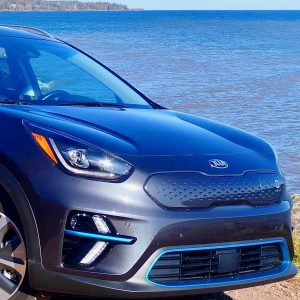
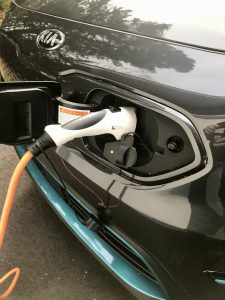
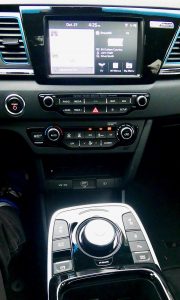
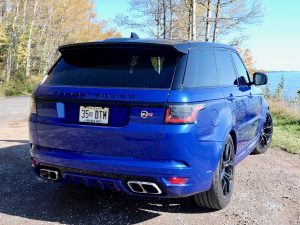
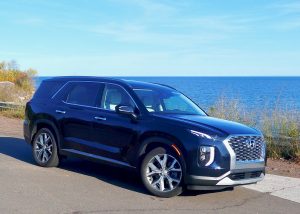
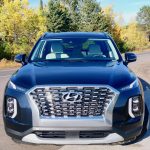
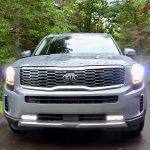
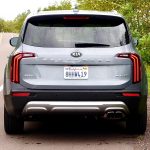

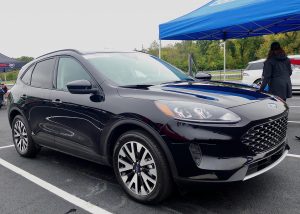
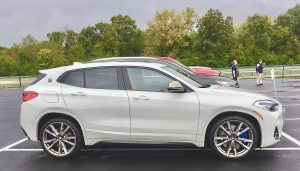
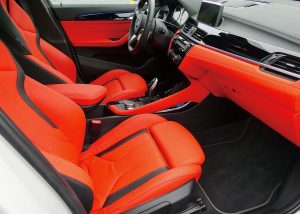
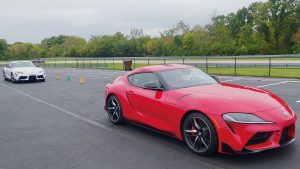

 John Gilbert is a lifetime Minnesotan and career journalist, specializing in cars and sports during and since spending 30 years at the Minneapolis Tribune, now the Star Tribune. More recently, he has continued translating the high-tech world of autos and sharing his passionate insights as a freelance writer/photographer/broadcaster. A member of the prestigious North American Car and Truck of the Year jury since 1993. John can be heard Monday-Friday from 9-11am on 610 KDAL(www.kdal610.com) on the "John Gilbert Show," and writes a column in the Duluth Reader.
John Gilbert is a lifetime Minnesotan and career journalist, specializing in cars and sports during and since spending 30 years at the Minneapolis Tribune, now the Star Tribune. More recently, he has continued translating the high-tech world of autos and sharing his passionate insights as a freelance writer/photographer/broadcaster. A member of the prestigious North American Car and Truck of the Year jury since 1993. John can be heard Monday-Friday from 9-11am on 610 KDAL(www.kdal610.com) on the "John Gilbert Show," and writes a column in the Duluth Reader.